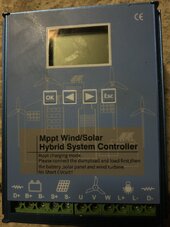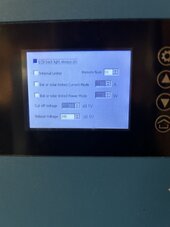So the turbine will be trying to charge the batteries and power the inverter as well This is a grid tied inverter? Not familiar with this type. Inverters will generally consume power just to be on, mine uses about 14 watts if on. There should be a "zone" where the turbine does not see a load up to a certain RPM where the charging turns "on", I built mine to turn "on" at 75 RPM, below that it should spin freely and not do any charging.
Sounds like yours may be set to charge at a lower rpm? This would be more likely in a 12v battery scenario where spinup to charging voltage would be at a low rpm.




